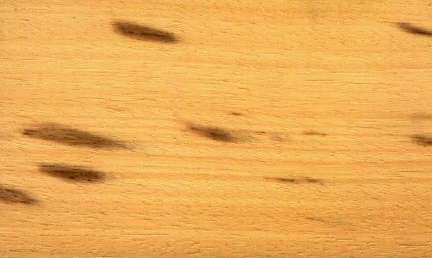
Anakwa (Holoptelea grandis)
Family: Ulmaceae
Common names: Anakwa, Avep-ele, Aweb, Awob, Ayo, Bala, Butungu, Gomboul, Inajoko, Kekele, M'bosso, Mumuli, Mutaa, Mutawale, Nemba, Nemba-mbolo, Olazo, Orange barked terminalia, Ulazo
Distributed in: Congo, India, Ivory Coast, Sudan, Uganda, Zaire (Africa, Oceania and S.E. Asia)
Common uses: Boat building (general), Boxes and crates, Cabinetmaking, Flooring, Food containers, Furniture, Heavy construction, Joinery, Light construction, Matches, Millwork, Paneling, Particleboard, Plywood, Pulp/Paper products, Railroad ties, Tool handles, Turnery, Vats, Vehicle parts, Veneer: decorative
Tree size: Tree height is 20-30 m
Colors: the heart isYellow, Yellow to golden-yellow to orangeand the sapwoodSame as heartwood, Yellow.The grain isStriped figure, the textureUniformand the lusterSlightly lustrous
Natural durability: Susceptible to Termite (lsoptera) attack, Susceptible to attack from powder post (Lyctid & Bostrychid) beetles
Odor: Has an odor
Kiln Schedules: UK= C US=T3C2/T3C1 Fr=3
Kiln Drying Rate: Rapid (<10 days for boards < 32 mm, to <30 days for boards >= 63 mm)
Drying Defects: No surface checking, Splitting
Ease of Drying: Thick Stock Requires Care
Tree Identification: Bole/stem form is straight
Comments: General finishing qualities are rated as good
Blunting Effect: High to severe
Boring: Fairly difficult to very difficult
Carving: Fairly Difficult to Very Difficult
Cutting Resistance: Fairly Difficult to Very Difficult to saw
Gluing: Easy to glue
Mortising: Finishes well
Moulding: Good finishing
Movement in Service: Good finishing
Nailing: Difficult to nail, Easy to nail
Planing: Planes well, to a good finish
Resistance to Impregnation: Resistant sapwood
Resistance to Splitting: Poor
Response to hand tools: Easy to machine
Routing recessing: Routing is difficult
Sanding: Good sanding finish
Turning: Poor results
Polishing: Satisfactory;
- Numerical data Metric
- Numerical data English
- Strength properties
- References
 |
 |
 |
 |
| Item |
Green |
Dry |
Metric |
| Specific Gravity |
|
|
|
| Density |
|
673 |
kg/m3 |
| Bending Strength |
826 |
1262 |
kg/cm2 |
| Crushing Strength |
391 |
588 |
kg/cm2 |
| Hardness |
|
511 |
kg |
| Impact Strength |
|
81 |
cm |
| Shearing Strength |
|
155 |
kg/cm2 |
| Stiffness |
98 |
114 |
1000 kg/cm2 |
| Tangential Shrinkage |
8 |
|
% |
| Radial Shrinkage |
4 |
|
% |
| Weight |
657 |
528 |
kg/m3 |
| Maximum Load |
|
|
cm-kg/cm3 |
| Toughness |
|
|
cm-kg |
| Static Bending |
|
|
kg/cm2 |
|
 |  |  |  | | Item | Green | Dry | English | | Bending Strength | 11749 | 17953 | psi | | Density | | 42 | lbs/ft3 | | Hardness | | 1127 | lbs | | Impact Strength | | 32 | inches | | Maximum Crushing Strength | 5573 | 8368 | psi | | Shearing Strength | | 2205 | psi | | Stiffness | 1403 | 1625 | 1000 psi | | Weight | 41 | 33 | lbs/ft3 | | Radial Shrinkage | 4 | | % | | Tangential Shrinkage | 8 | | % | | Volumetric Shrinkage | 12 | | % | |
Bending strength (MOR) = medium
Shrinkage, Radial = moderate
Max. crushing strength = high
Max. crushing strength = medium
Hardness (side grain) = soft
Shearing strength (parallel to grain) = medium
Modulus of Elasticity (stiffness) = low
Bending strength (MOR) = high
Toughness-Hammer drop (Impact Strength) = low
Shrinkage, Volumetric = moderate
Shrinkage, Volumetric = fairly large
Shrinkage, Tangential = small
Shrinkage, Tangential = moderate
Shrinkage, Tangential = large
Shrinkage, Tangential = fairly large
Shrinkage, Radial = small
Modulus of Elasticity (stiffness) = medium
Density (dry weight) = 38-45 lbs/cu. ft.
Toughness-Hammer drop (Impact Strength) = medium
Shrinkage, Radial = large
Shrinkage, Radial = fairly large
Modulus of Elasticity (stiffness) = very low
Hardness (side grain) = medium
Density (dry weight) = 53-60 lbs/cu. ft.
Density (dry weight) = 46-52 lbs/cu. ft.
Density (dry weight) = 31-37 lbs/cu. ft.
Bending strength (MOR) = very high
Bolza, E., Keating, W.G.,1972,African Timbers - the Properties, Uses and Characteristics of 700 Species,C.S.I.R.O. Div. of Building ResearchChalk, L.,1933,Twenty West African Timber Trees,Forest Trees and Timbers of the British Empire,Part 2Dalziel, J.M.,1937,The Useful Plants of West Tropical Africa,Crown Agents for the ColoniesEggeling, W.J.,1940,Indigenous Trees of Uganda,Govt. Printer Entebbe UgandaErfurth, T., Rusche, H.,1976,The Marketing of Tropical Wood A. Wood Species from African Moist Forests,F.A.O. Forestry DepartmentForest Products Research Laboratory, Nigeria,1967,Holoptelea grandis,Nigeria Fed. Department of Forest Research, Ibadan, Forest Products,Research Laboratory Report No.13Fouarge, J., Gerard, G.,1964,Bois du Mayumbe,I.N.E.A.C. BelguimFouarge, J.,1970,Essais Physiques,Mecaniques et de Durabilite de Bois de la Republique,Democratique du Congo,I.N.E.A.C. Belgium Serie Technique,No.76France - C.T.F.T./C.T.B.,1982,Guide pour le Choix des Essences Deroulables-pour la fabrication du,contreplaque,C.T.F.T./C.T.B. FranceIrvine, F.R.,1961,Woody Plants of Ghana,O.U.P. LondonPieters, A.,1977,Essences Forestieres du Zaire,R.U.G. Gent BelguimSallenave, P.,1971,Proprietes Physiques et Mecaniques des Bois Tropicaux (Deuxieme,Supplement,C.T.F.T.Sharma, S.N., et al,1960,Experiments on the High Temperature Drying of some Indian Timbers,Indian Forest Bulletin (N.S.,No.230Tack, C.H.,1969,Uganda Timbers,Govt. Printer UgandaTakahashi, A.,1978,Compilation of Data on the Mechanical Properties of Foreign Woods (Part,III) Africa,Shimane University, Japan, Research Report on Foreign Wood No. 7Uganda Forest Department,1955,Mumuli (Holoptelea grandis,Uganda Forestry Department Timber Leaflet,No.24
|








